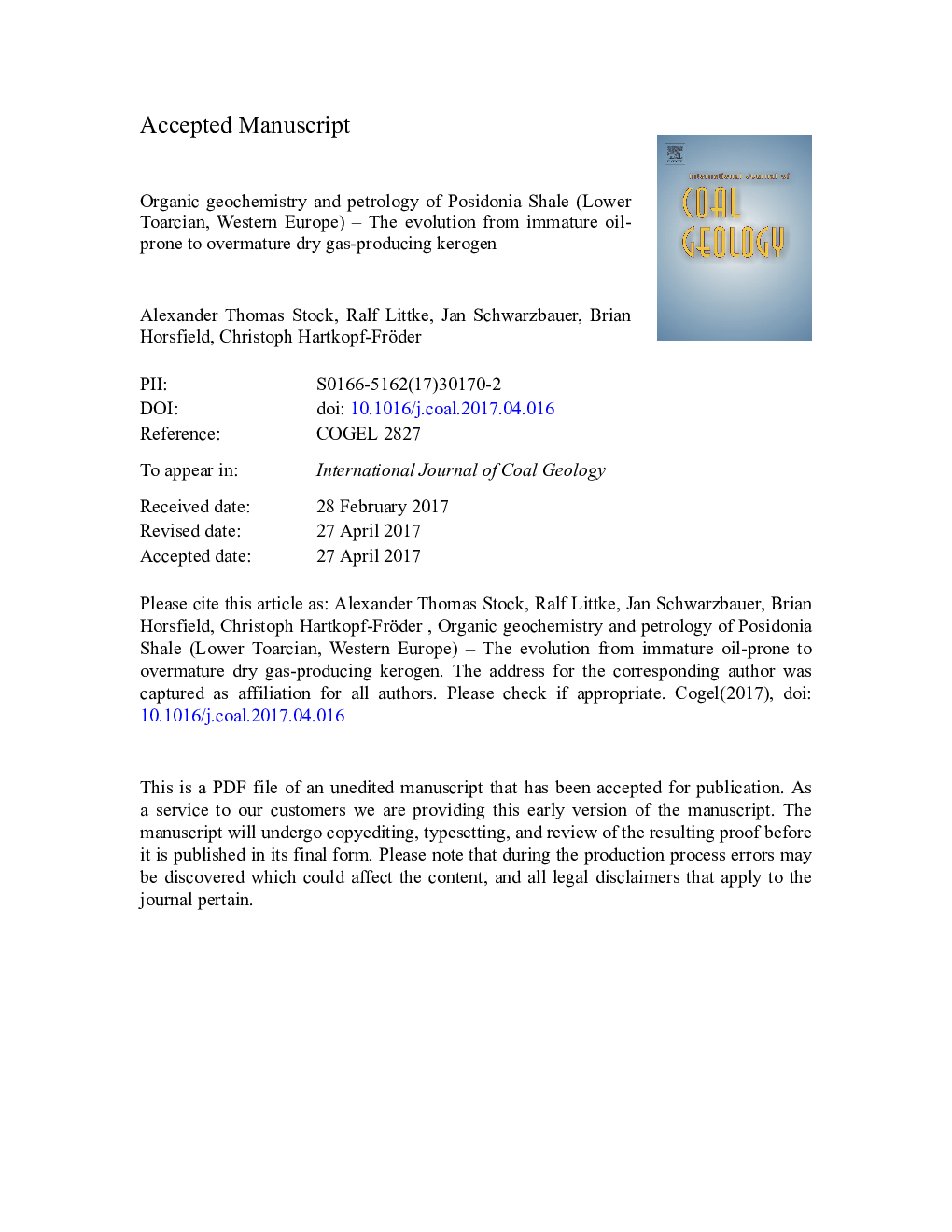| Article ID | Journal | Published Year | Pages | File Type |
|---|---|---|---|---|
| 5483641 | International Journal of Coal Geology | 2017 | 52 Pages |
Abstract
FT-IR spectra show a decrease in functional group bands with increasing maturation which has been quantified. CP-Py-GC-MS analyses indicate an increase in hydrocarbons, especially for short- and medium-length n-alkanes, with a strong predominance of short-length alkanes at highest maturities (about 3% VRr). This effect, however, depends also on the applied pyrolysis temperature, where higher temperatures (920 °C, as compared to 650 °C) favor generation of short-length n-alkanes, especially for samples at high levels of maturation. Ratios of aromatic over aliphatic hydrocarbons or alkenes over alkanes show a non-steady evolution, depending also on the applied pyrolysis temperatures, indicating that higher pyrolysis temperatures are needed for pyrolytic alkene formation, with a maximum alkene formation for samples within early overmature maturities (~ 1.4% VRr). Aromaticity first decreases, but increases at high levels of maturation. Finally, weathering of the highly overmature sample (3% VRr) resulted in strong oxidation of organic matter with impact on Rock-Eval, FTIR and Curie Point-pyrolysis data.
Related Topics
Physical Sciences and Engineering
Earth and Planetary Sciences
Economic Geology
Authors
Alexander Thomas Stock, Ralf Littke, Jan Schwarzbauer, Brian Horsfield, Christoph Hartkopf-Fröder,
